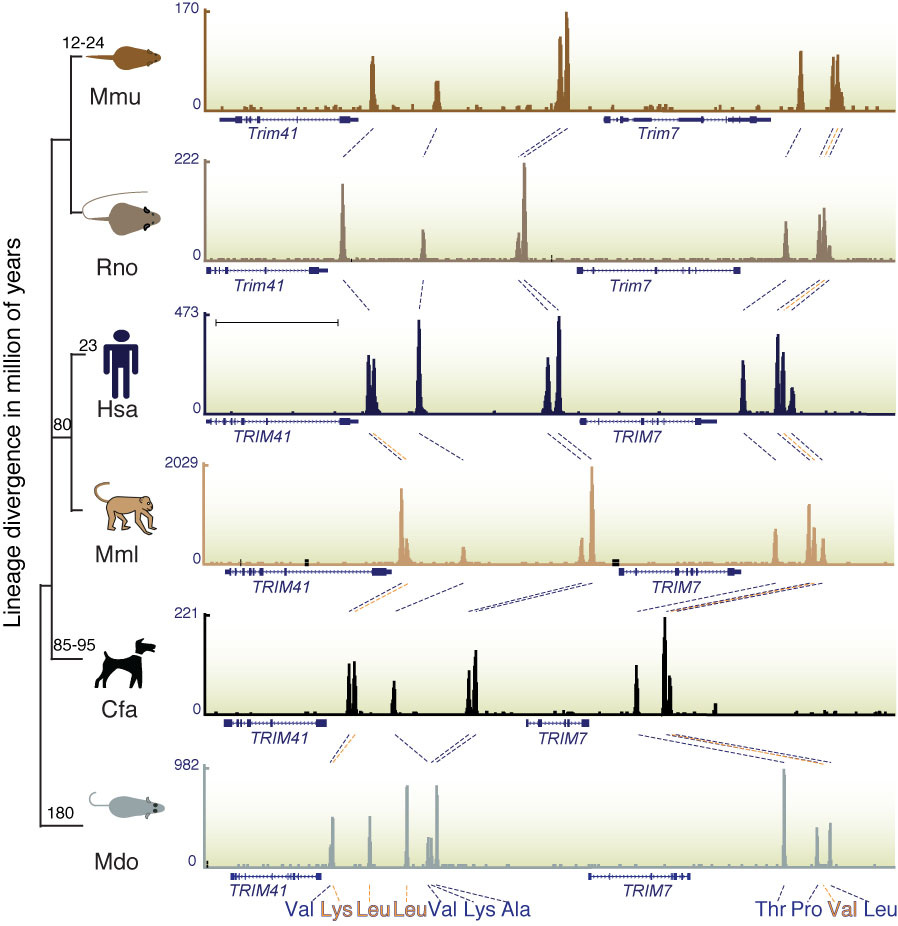Odom Group
Regulatory evolution in mammalian tissues
Archive Page
This page is maintained as a historical record and is no longer being updated.
Duncan Odom’s Associate Research Group operated at the Wellcome Sanger Institute from 2011 to 2018. This page is no longer being updated but is being maintained as a historical record of the work of the group during that time. To contact Duncan at the Cancer Research UK Cambridge Institute, please email: duncan.odom@cruk.cam.ac.uk
We compared how transcription and transcriptional regulation vary during evolution, and the implications this regulatory plasticity has for diseases such as cancer. We used numerous new high-throughput methods combined with analysis of multiple mammals and vertebrates to reveal fundamental biological insights into tissue-specification and genome evolution.
Background
The wide variety in forms and functions among animals we see today is profoundly linked with diseases such as cancer by the simple fact that they originate from a common source: differences in DNA.
Enormous efforts are being put forth to identify the mutations associated with cancers, but one of the most formidable challenges today is understanding what these mutations do (or, more often, do not do). There is still a very poor understanding of which changes in the genome are harmless, and which have an effect of some kind, either good or bad. We analyze how very divergent genomes from different species can create the same, highly conserved cell type, liver, and what lessons this conservation holds for understanding the biology of the genome.
Research
Many different kinds of proteins interact with the mammalian genome to direct transcription of specific cell types.These protein-DNA interactions range from very precise, yet widespread binding of tissue-specific transcription factors, to the anchorage-like binding of insulator proteins such as CTCF and NRSF, to the basic transcriptional machinery of the polymerases.

- among different cell types within one species
- among the same cell type from many species
For instance, we have discovered that mammalian transcription factors rarely, if ever, show high conservation in transcription factor binding, as was previously expected. In contrast, insulators are much more frequently conserved, but are subject to lineage-specific, large-scale remodelling based on activation of repeat elements in the genome. At the level of the basal machinery, by investigating how RNA polymerase III regulates tRNAs in multuple mammals, we have discovered that the polymerases responsible for gene expression may be under constraint at the level of their transcripts, the mechanism for which we are actively investigating.
Our ongoing work at the Sanger Institute will produce a cross-sectional view of the liver epigenome for a wide variety of vertebrates. In addition, we have begun an integrated cancer systems biology project that combines the high-throughput experimental expertise at the Wellcome Sanger Institute with the cancer biology approaches from Cancer Research UK’s Cambridge Research Institute.
Partners
In addition to many collaborators at the Sanger Institute and The Cambridge Research Institute (CRI), we also work closely with a number of sister groups, including those of:
